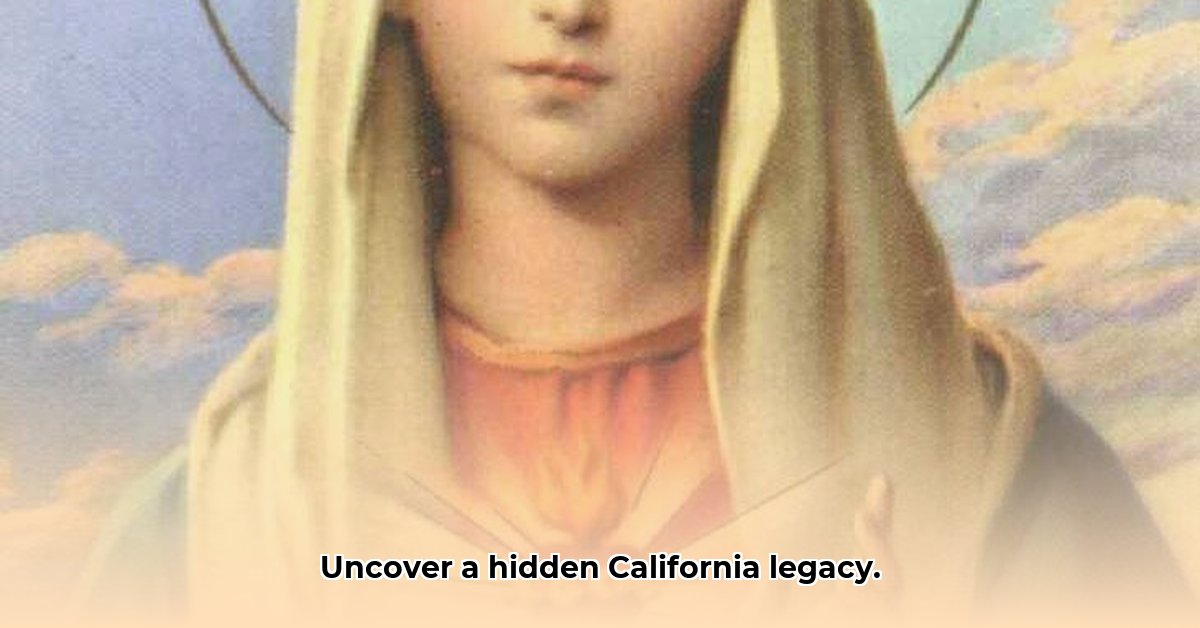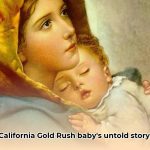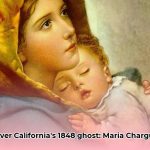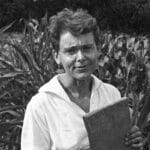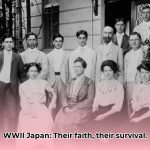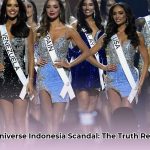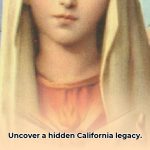Have you ever wondered about the lives of ordinary people lost to history? Maria Catarina Charguana, born in 1848 at Mission San Fernando, is one such example. She was a fascinating mix of cultures – Luiseño, French-Canadian, and Spanish – a daughter of Jean Baptiste Charbonneau and Margarita Sobin. This article is a detective story, piecing together her life from clues scattered across time. We’ll explore the challenges of uncovering her story, because researching families like hers in 19th-century California is tough. We’ll look at how we can find answers from old records and how we can ensure our research stays reliable for generations to come. It’s a journey into the past, not just to learn about Maria Catarina, but also about the lives of people who lived in a very different California. Get ready for a story of family, culture, and the detective work it takes to bring a forgotten life back to light. For more details, see her detailed profile.
Maria Catarina Charguana Personal Background: Unraveling a California Mystery
Maria Catarina Charguana’s life story is a fascinating puzzle, a captivating glimpse into 19th-century California, a time when cultures intertwined, and lives were often left undocumented. Born on May 4th, 1848, at Mission San Fernando Rey de España, her very beginnings are shrouded in mystery. Piecing together her past requires detective work, a careful weaving together of fragmented clues, particularly considering the limited scope of genealogical records for marginalized communities during that timeframe.
A Family’s Heritage: A Mix of Cultures
Her parents, Jean Baptiste Charbonneau and Margarita Sobin, represent a melting pot of heritage, reflecting the cultural diversity prevalent in California during that era. Jean Baptiste, with his French-Canadian roots, met Margarita, a woman of Luiseño Native American and likely Spanish colonial ancestry. According to baptismal records, Father Blas Ordaz performed Maria Catarina’s baptism on May 28, 1848. The exact nature of Jean Baptiste and Margarita’s relationship is unclear, adding to the intrigue surrounding Maria Catarina’s origins. Their union, informal perhaps, created a family blending several distinct cultural backgrounds – a common yet complicated scenario in the California of that era.
Even her surname adds to the mystery. Baptised as “Charguana,” not “Charbonneau,” was this a simple clerical error, a conscious decision reflecting a new family identity, or another detail lost to time? The variations in spelling, such as “Cantarina Charguana,” found in records further complicate matters. This question alone sparks numerous avenues of inquiry. Uncovering these family dynamics is crucial to understanding the cultural context of Maria Catarina Charguana’s life.
Margarita Sobin: A Life Largely Unknown
The life of Margarita Sobin, Maria Catarina’s mother, remains frustratingly elusive. Official records offer few insights into her life before or after Maria Catarina’s birth. What were her experiences? How did her Luiseño heritage shape her worldview and her daughter’s upbringing? Answers to these questions are vital to understanding Maria Catarina’s life, yet they remain largely hidden, highlighting the significant challenges faced when researching the lives of marginalized women in 19th-century California. The scarcity of information forces us to rely on indirect evidence and educated guesses, which necessitates a cautious approach when interpreting historical data. It is believed that Margarita later married Gregory Trujillo.
A Name Change: Clues to a Shifting Identity
Later in life, Maria Catarina adopted the surname “Trujillo.” The reason remains a significant area of speculation among researchers, highlighting the importance of family history research. Did she marry? Did a previously unknown family connection emerge? Or did she perhaps consciously choose to identify with a different cultural group? Each possibility offers a different lens through which to view her evolving identity, and each warrants further investigation. The lack of a definitive answer only intensifies the mystery, fueling the ongoing quest to understand her choices and the reasons behind them. Further complicating the record, some researchers believe Margarita Sobin’s mother’s maiden name may have been “Charguana.”
The Challenges and Rewards of Historical Research
Uncovering Maria Catarina’s life story is no easy task. Historical records from this period are often incomplete, sometimes biased, and frequently fragmented. This is especially true when dealing with records concerning Indigenous populations. The limitations of 19th-century record-keeping practices, coupled with potential inaccuracies due to cultural differences in naming conventions and record-keeping styles, present significant obstacles. However, we can still make progress.
These difficulties, however, don’t diminish the importance of the pursuit, but highlights the unique opportunities presented by this research. We can potentially enrich our understanding of her life by exploring Luiseño oral traditions, local historical knowledge, and family stories passed down through generations. These avenues hold potential for uncovering details that may be absent from formal records.
Collaboration: Building a More Complete Picture
The key is collaboration. Researchers, historians, genealogists, and, most importantly, members of the Luiseño community must work together. Their combined knowledge and expertise can provide a much more complete portrait of Maria Catarina’s life than any single source can offer. By integrating archival research with local knowledge and oral histories, we can gradually construct a richer narrative, giving voice to a woman whose story has remained largely unknown for too long.
Preserving a Legacy
Maria Catarina Charguana’s story isn’t just a genealogical puzzle; it’s a window into the experiences of Indigenous women and people of mixed heritage in 19th-century California. It’s a story brimming with richness and complexity, a testament to the resilience and adaptability of individuals navigating a period of significant cultural change. By actively researching and sharing her story, we honor her memory, illuminate a vital yet often overlooked aspect of California’s past, and encourage a deeper understanding of the many interwoven cultures that shaped the state’s rich heritage. The journey of discovery is complex, filled with unanswered questions, but the potential for understanding is significant. The search continues.
Pivotal Points in Maria Catarina’s Story:
- Born into a culturally diverse family in 1848, reflecting the complex social landscape of 19th-century California.
- Baptized at Mission San Fernando Rey de España on May 28, 1848.
- Faced challenges due to limited and fragmented historical records, particularly impacting marginalized communities.
- Her story represents a larger narrative of Indigenous women and people of mixed heritage, promoting a deeper understanding of California’s multifaceted past.
How to Trace California Luiseño Ancestry Using Fragmented Records
Uncovering the life of Maria Catarina Charguana, a Luiseño woman of 19th-century California, presents a fascinating yet challenging genealogical puzzle. Her story, like that of many from marginalized communities, is fragmented, requiring persistence and creative research strategies. Where do we even begin with how to trace california luiseño ancestry using fragmented records? This involves navigating a complex web of historical documents and community knowledge.
Navigating the California State Archives
The California State Archives holds a wealth of historical documents, but its collection is uneven. While plentiful records exist for certain periods, significant gaps appear, especially regarding Indigenous populations. County-level records often prove more comprehensive. Think of it like a jigsaw puzzle—the state archives provide some key pieces, but you’ll need to hunt for others elsewhere.
- Step 1: Start with the state archives’ online catalog. Identify potentially relevant documents such as probate records, marriage certificates, and census data. These may offer direct references to Maria Catarina or her family.
- Step 2: Remember, the California State Archives isn’t the sole source of vital records. County offices frequently hold more complete sets, particularly for later years. Expanding your search to these local repositories is crucial, bearing in mind that genealogical research often expands beyond key resources.
- Step 3: Be aware of access restrictions. Some historical records may have limitations due to privacy concerns or preservation needs. That’s why patience and meticulous research are key parts of how to trace california luiseño ancestry using fragmented records.
Leveraging FamilySearch’s Global Network
FamilySearch offers a vast, crowdsourced genealogical database, offering valuable insights related to historical genealogy. It’s a powerful tool but needs cautious use. While the sheer volume of information is impressive, accuracy varies. Think of it as a vast library—many valuable books, but some with incomplete or questionable information.
- Step 1: Search FamilySearch for records connected to the Luiseño people in California. Utilize variant spellings of names like “Charguana” and “Sobin.” Look beyond direct mentions of Maria Catarina; you may find relatives or community records.
- Step 2: Always cross-reference information from FamilySearch with other sources. Multiple confirmations build stronger genealogical evidence. Check sources such as census records or mission documents to verify the data. It’s all a part of how to trace california luiseño ancestry using fragmented records.
- Step 3: Recognize the limitations of user-submitted data. Not all information is verified, so independent verification is essential. Pay close attention to the sources cited and evaluate their reliability.
Oral Histories and Community Engagement
The Luiseño community itself holds invaluable knowledge. Oral histories and family traditions could unlock crucial information not found in written records, underscoring the importance of cultural heritage preservation. Reaching out respectfully to tribal elders or community historians may be a pivotal step in your research. Human
